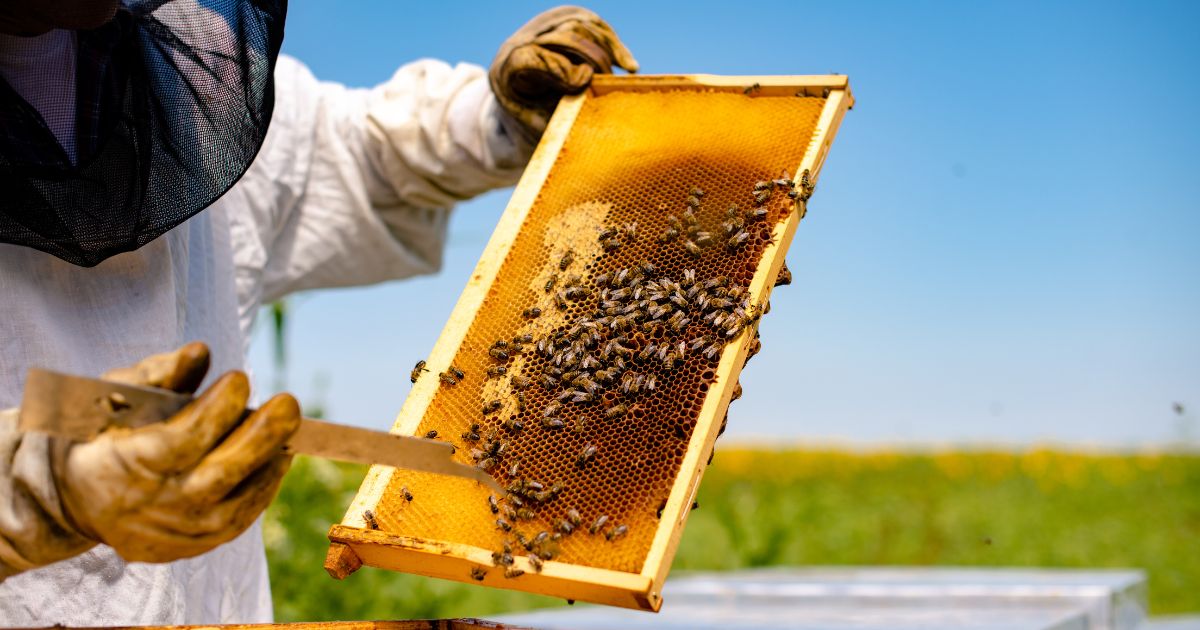
So you've decided to join the fascinating world of beekeeping! Honeybees are not only essential pollinators, but they can also be a delightful addition to your backyard. But before you dive headfirst into harvesting golden honey, it's crucial to understand how to safely interact with your buzzing friends.
This guide equips you with essential tips to ensure a smooth, bee-autiful experience for both you and your hive. Let's suit up and explore how to navigate the hive with confidence!
Gearing Up for Hive Success
Protective gear is your first line of defense. A well-ventilated bee suit with a veil shields you from stings while allowing you to observe your bees. Don't forget gloves – opt for thick fabric with good dexterity for handling frames. Leather boots offer additional protection from accidental stings on your ankles.
Knowing Your Enemy (Well, Not Exactly!)
Bees, while generally docile creatures, can become defensive if they feel threatened. Here's how to understand their behavior and minimize the risk of getting stung:
- Timing is Everything: Schedule inspections on sunny, calm days between 10 am and 4 pm. Avoid hot, cold, or rainy weather, as this can put the bees on edge.
- Smoke Signals: A smoker gently puffs puffs of smoke at the hive entrance. Smoke disrupts the bees' communication pheromones, making them less defensive and more focused on filling their honey sacs with honey (a fire escape plan for potential threats!). But use smoke sparingly – too much can irritate the bees.
- Move with Confidence (but Not Haste): Sudden movements can startle the bees. Make slow, deliberate motions as you work within the hive.
Hive Inspections: A Balancing Act
Regular hive inspections are vital for monitoring bee health and identifying potential problems. Here's how to conduct a safe and productive inspection:
- Suit Up: Gear up completely before approaching the hive.
- Light the Smoke: Light your smoker and let it puff for a few minutes before approaching the hive.
- Open the Hive Gently: Use a hive tool to gently pry open the hive top.
- Work Methodically: Remove frames one at a time, using a hive tool to loosen them if necessary. Examine each frame for brood (bee eggs, larvae, pupae), honey stores, and signs of disease or pests.
- Minimize Disruption: Limit the inspection time to avoid stressing the bees. Replace frames carefully in the order they were removed.
- Close Up Shop: Secure the hive top and extinguish the smoker safely.
Keeping Calm and Carrying On: What to Do if You Get Stung
Getting stung is an unfortunate reality of beekeeping. Here's what to do if it happens:
- Remove the Stinger: Scrape the stinger out of your skin using a fingernail or hive tool. Don't squeeze it, as this releases more venom.
- Soothe the Sting: Apply ice or a cold compress to reduce swelling and discomfort. Calamine lotion or a baking soda paste can also help.
Bonus Tip: Consider taking a beekeeping course offered by your local beekeeping association. This is a fantastic way to learn proper hive management techniques from experienced beekeepers.
FAQ: Frequently Asked Questions About Bee Safety
Do I need to be allergic to bees to be a beekeeper?
While bee allergies can be a serious concern, many beekeepers manage hives without allergies. However, it's crucial to understand your allergy status and have an emergency plan in place if necessary.
What happens if a bee stings my suit?
A single sting through your suit shouldn't penetrate your skin. If you feel multiple stings in one area, check your suit for tears or holes.
What are some signs of a distressed hive?
Excessive aggression, lack of activity at the hive entrance, or abnormal brood patterns could indicate a problem. If you suspect an issue, consult a beekeeping mentor or local beekeeping association.
Conclusion
Beekeeping is a rewarding hobby that fosters a deep appreciation for these vital pollinators. By prioritizing safety and understanding bee behavior, you can ensure a harmonious relationship with your hive. Remember, beekeeping is a journey of learning and constant observation. With a little planning and the right precautions, you'll be well on your way to becoming a confident beekeeper!

